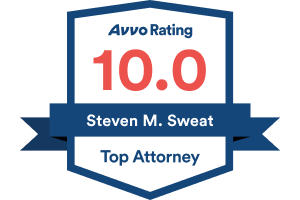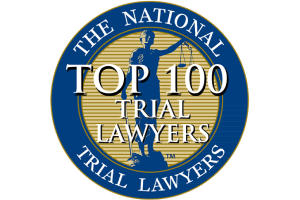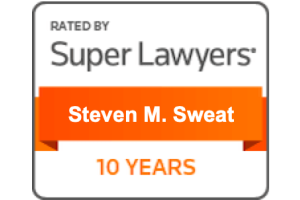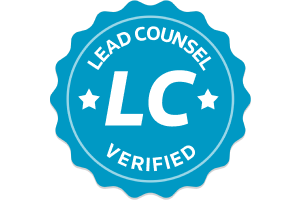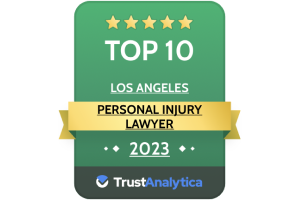for Over 25 Years
Rear End Collision Attorney Los Angeles
Rear-end collisions are the most common type of crash that happens in California. According to a study conducted by the National Highway Traffic Safety Administration (NHTSA), rear-end crashes account for an estimated 29% of all collisions that occur in the U.S.
These types of accidents and the laws that relate to them are particularly important in California because of the high volume of traffic navigating the state’s roads and the large number of streets and roads in urban areas like Los Angeles and Orange County. These combined factors result in many rear-end collisions every year because of people following too closely, driving while distracted, or speeding in the state. While many rear-end collisions are relatively low-impact and occur while traffic is moving slowly, they can cause serious injuries at even moderate speeds.
California Laws and Rear-End Crashes
Two laws frequently are involved in determining liability in rear-end crashes in California. In most cases, the rear driver will be found at fault.
Under Cal. Veh. Code § 22350, motorists are not to drive faster than what is reasonable or prudent under traffic, road, and weather conditions. This is known as California’s basic speed law, and it often is involved in rear-end accidents. A motorist can be found in violation of this law even if they are traveling at the posted speed limit but are driving faster than what the conditions dictate at the time they cause a rear-end accident.
The second law in California that is frequently involved in rear-end accident claims is Cal. Veh. Code § 21703. Under this statute, it is illegal for motorists to follow others too closely based on the traffic volume, speed of traffic, and other factors.
Drivers are generally supposed to use a three-second rule to determine how much distance they should leave between their vehicles and the ones in front of them. To use this rule, motorists can take a fixed object on the side of the road and count the seconds between when the vehicle in front passes the object and then when yours does to make sure that there is at least a three-second difference. This rule is based on the assumption that the pavement is dry and the road conditions are good. If it is raining, more distance should be allowed. You should avoid following the vehicle in front of you too closely to try to get them to move over or because of others behind your vehicle that are tailgating you.
Dynamics of a Rear End Crash
The dynamics of a rear end collision depend on the speed and mass of the vehicles involved in the collision. When two vehicles collide, the force of the collision is transmitted through the bumpers and frame of the vehicles and into the bodies of the vehicles. This force causes the vehicles to deform and move in opposite directions. The speed and mass of the vehicles determine the amount of force that is transmitted and the amount of deformation and movement that occurs. The greater the speed and mass of the vehicles, the greater the force and the amount of deformation and movement that occurs. The speed and mass of the vehicles also determine the amount of damage that is caused in the collision and the severity of any injuries that are sustained.
Common Types of Injuries in Rear-End Collisions
Rear-end accidents can result in many types of injuries. However, those listed below are the most common.
- Whiplash – Whiplash is a very common injury that might happen in a rear-end collision. When a rear vehicle strikes the vehicle in front of it, the occupants of the front vehicle can be thrown forward before returning back. This violent forward and backward motion of your head and neck can cause the soft tissues of your neck to hyperextend, resulting in damage. Whiplash injuries involve damage to the muscles, ligaments, and tendons in your neck and upper shoulders, and they can range in severity. While mild whiplash might resolve after a few weeks, severe whiplash cases can continue to cause symptoms for months or longer.
- Traumatic brain injuries (TBIs) – The forward and backward propulsion of your body in a rear-end collision can also cause your brain to move inside of your skull and strike the bones. When this happens, it can cause a brain injury. TBIs can range in severity and can result in long-lasting symptoms that might permanently alter your life in severe cases. TBIs and head trauma should be taken seriously and lead to immediate medical attention. Some of the symptoms might include headaches, dizziness, nausea, memory loss, temporary loss of consciousness, vision problems, loss of balance and coordination, and others. Whenever a head or brain injury is suspected, people should be seen by a doctor immediately.
- Spinal disc injuries – The discs in the cervical and thoracic regions of the spine can be injured in rear-end accidents. People sometimes suffer protruding or bulging discs and disc herniations because of the forces involved in rear-end accidents. Some of the symptoms associated with spinal disc injuries include neck and head pain and shooting pains or numbness down the extremities, including the legs or arms. Minor back and neck injuries can typically be treated with physical therapy, but severe injuries might require surgical interventions, including spinal fusion or microdiscectomy.
What to Do Following a Rear-End Accident
If you are involved in a rear-end collision, you should immediately contact the police by dialing 911. Anytime you are involved in a collision that results in injuries or death, you are required by law to report the accident under Cal. Veh. Code § 20001-20018.
Reporting an accident is both required and can also help you if you later file a claim. If you don’t report your accident, it will be hard to prove that your accident occurred and resulted in your injuries. The police report can also help by providing a roadmap for your attorney’s investigation.
Exchange your information with the other driver, including insurance, vehicle registration information, driver’s license details, name, and address. Make sure you get this information from the other driver as well. If you can, take pictures of the other driver’s documents (driver’s license, insurance card, and registration).
Once you report your accident, check everyone at the scene for injuries and provide first aid if necessary. Gather evidence at the scene if possible by taking photographs and getting the names and contact information of any witnesses. Your attorney can also help you gather evidence later, including securing video of the accident if it’s available and statements from eyewitnesses. Some types of evidence might be time-sensitive, making it important to get help from a lawyer as soon as possible.
Make sure to see a doctor immediately after you have spoken to the police. If you are unsure if you have been injured, you should still see a doctor to get a medical examination. Some injuries have delayed symptoms. If you don’t seek immediate medical care, your injuries might worsen, and it might be more difficult for you to prove they were caused by your collision.
Liability in a Rear-End Accident
To recover compensation for your injuries, you will have the burden of proof to show that the other driver was negligent and liable. Most rear drivers are liable for rear-end collisions. However, there are some situations in which the front driver might share liability. For example, if the front driver was driving at night on a poorly-lit road with non-working taillights, the front driver might also be at fault.
Most common statute used to hold rear end driver at fault for a backside crash: There are principally two California Vehicle Codes that usually hold the driver in the rear responsible. These are as follows:
- California Basic Speed Law: California Vehicle Code 22350 which states: “No person shall drive a vehicle upon a highway at a speed greater than is reasonable or prudent having due regard for weather, visibility, the traffic on, and the surface and width of, the highway, and in no event at a speed which endangers the safety of persons or property.”
- Following Too Closely: California Vehicle Code 21703 which states: “The driver of a motor vehicle shall not follow another vehicle more closely than is reasonable and prudent, having due regard for the speed of such vehicle and the traffic upon, and the condition of, the roadway.”
An attorney can help you gather evidence to prove the other driver’s negligence in your case. You will need to prove each of the elements of negligence to prevail, and a lawyer can make sure you have the evidence necessary to do so.
Damages in a Rear-End Accident
The value of a rear-end accident will depend on numerous factors. An attorney can review your case and calculate its value so that you can properly evaluate any settlement offer the insurance company might send. Some of the types of compensation that might be available include the following:
- Past and future medical costs
- Past and future wage losses
- Vehicle repair costs
- Towing costs
- Physical pain and suffering
- Emotional distress
- Disability
- Reduced quality of life
When you retain a lawyer from the law firm of Steven M. Sweat, Personal Injury Lawyers, APC, your attorney can handle all of the aspects of your case and negotiate with the insurance company for you to try to recover maximal compensation for your losses. If the insurance company does not offer a fair settlement, your attorney can file a lawsuit and fight for your rights in court.
California Statute of Limitations
California has established a statute of limitations at Cal. Code Civ. Proc. § 335.1 for personal injury claims, including those involving car accidents. Under this law, you have a deadline for filing a lawsuit of no more than two years following your collision. If you wait too long to file a lawsuit, you will lose your right to recover compensation for your losses. In practice, it is best for you to seek the help of an experienced attorney immediately after your accident so that evidence can be preserved.
Contact the law firm of Steven M. Sweat, Personal Injury Lawyers, APC
If you have sustained injuries in a rear-end accident in Los Angeles, you should speak to an experienced injury attorney at the law firm of Steven M. Sweat, Personal Injury Lawyers, APC. Our lawyers can review what occurred and help you understand your legal options and the potentially available remedies. We offer free consultations and work for a contingent fee, which means you will not have to pay attorney’s fees unless and until we recover compensation for you. Call us today at 866.966.5240.




